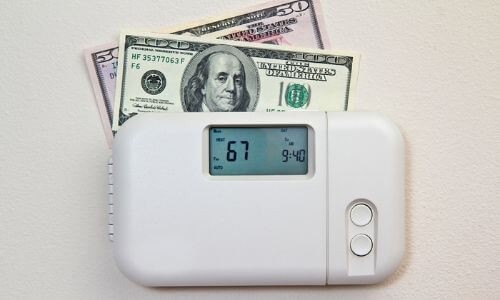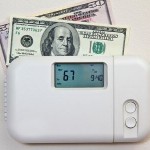Tips to Find The Ideal Temperature Setting
Homeowners often wonder what the best thermostat setting is for each season of the year. People who have the correct knowledge about the optimal temperature to set their thermostats can both save money on their electricity bills and reduce their carbon footprint.
While you always want to be able to set your indoor temperature at the opposite extreme, like a sauna in winter, oftentimes, this can also have a negative impact on your home. So how do you find the ideal temperature setting? The answers to that question may be surprising.
What is the Best Thermostat Setting for the Cold Months?
 Many people are tempted to crank up their home’s thermostat setting when Missouri temperatures begin to drop. However, according to most HVAC professionals, the best temperature setting for the home during the colder Fall and Winter months is actually 70 degrees Fahrenheit.
Many people are tempted to crank up their home’s thermostat setting when Missouri temperatures begin to drop. However, according to most HVAC professionals, the best temperature setting for the home during the colder Fall and Winter months is actually 70 degrees Fahrenheit.Adjusting to what many homeowners would consider a “cooler” temperature may be difficult, so one way to acclimate to the change is by doing it in baby steps. Homeowners can start by changing their thermostat setting to their higher, previously preferred temperature, then lower it by one degree weekly until they reach 70 degrees.
Even a one-degree adjustment to the thermostat setting can reduce the home’s electricity bill by 1%, and the gradual change can make it seem not quite as drastic. Rooms that are not in use should be closed off and doors and windows should be checked for air leaks and resealed (if necessary) to reduce the strain on the home’s HVAC unit. Regular maintenance services should always occur prior to any seasonal changes as well.
What is the Best Thermostat Setting for the Warm Months?
When the temperature outside starts to climb back up again during the Spring and Summer here in St. Louis, many homeowners feel the urge to drastically lower their thermostat setting in an attempt to stay cool. But the optimal thermostat setting for the air conditioning may be surprising to many people… it’s actually 78 degrees Fahrenheit!

While that may sound like it would be too high to keep the home cool during the warmest months of the year, that specific thermostat setting can not only save up to 10% on the electricity bill but also slow the actual flow of external heat into the home.
In addition to keeping the home at 78 degrees, it is also recommended that homeowners hang up dark colored curtains, reduce daytime use of heat creating appliances (like the stovetop/oven), and use ceiling fans set to rotate counter-clockwise.
What is the Best Temperature Setting for an Empty Home?
 While the thermostat settings mentioned above are meant for homes that are occupied, there are also optimal thermostat settings for those that stay mostly unoccupied during the day.
While the thermostat settings mentioned above are meant for homes that are occupied, there are also optimal thermostat settings for those that stay mostly unoccupied during the day.These temperatures function to help soothe the transition when people return home after a long day at work or school, as well as saving the homeowner money on their electricity bill.
In the warm months, the best temperature while homeowners are gone is 88 degrees Fahrenheit. In the cooler months, that temperature is between 62 and 66 degrees Fahrenheit. Homeowners should also continue to use the other seasonally appropriate energy-saving strategies mentioned above.
Programmable thermostats are another great tool, as they can be set ahead of time for optimal energy savings. Homeowners who understand and apply all of these tactics can find themselves with significant reduced heating and cooling costs that last all year long.
About Air Comfort Service, Inc.
Air Comfort Service, Inc has been providing full maintenance air conditioner and heating services to the St. Louis, Missouri area since 1969. The highly skilled staff takes care of each individual’s home or business with both personal and professional training and attention to detail.













